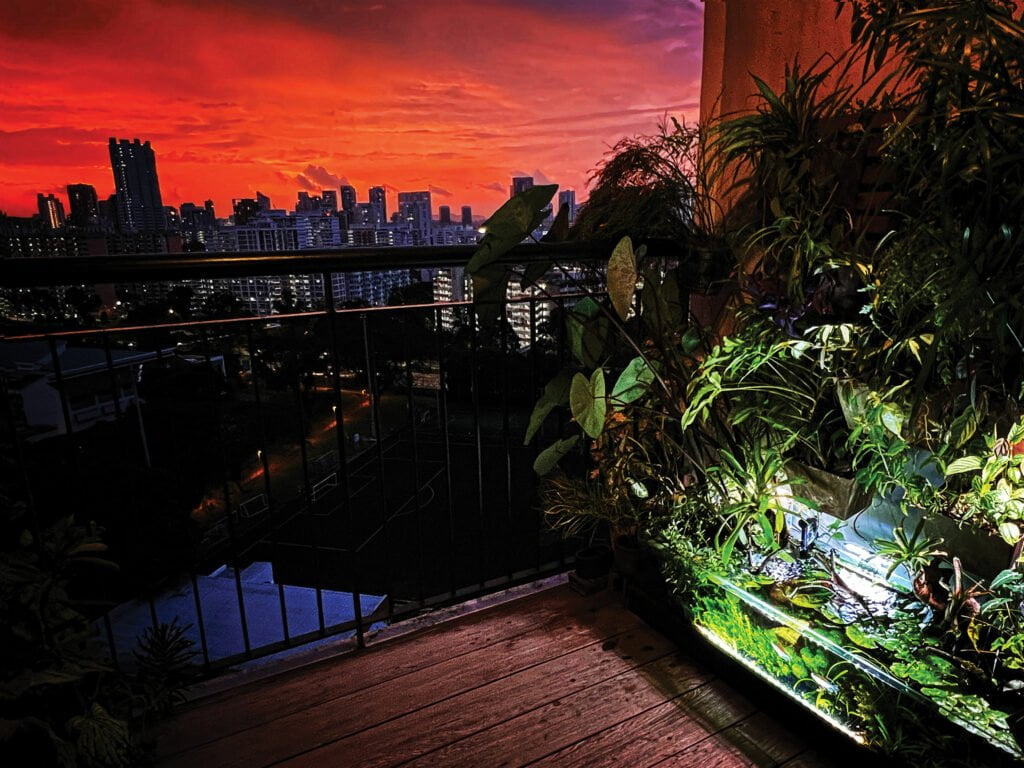
Chances are your home is a little greener than it was a few years back. As the pandemic forced us all inside, many of us set about bringing the outside in. Maybe you stuck a succulent in your bathroom. Perhaps you popped a monstera on your balcony. You wouldn’t be alone: throughout Singapore’s local community there’s a host of houses where the foliage is positively blooming, and it has been for a while.
Today, the trend for nurturing nature in indoor spaces is at a high. Research has proven how beneficial being around greenery can be for mental wellbeing, and the pastime that was once associated with retirees is now a hardcore hobby for all ages.
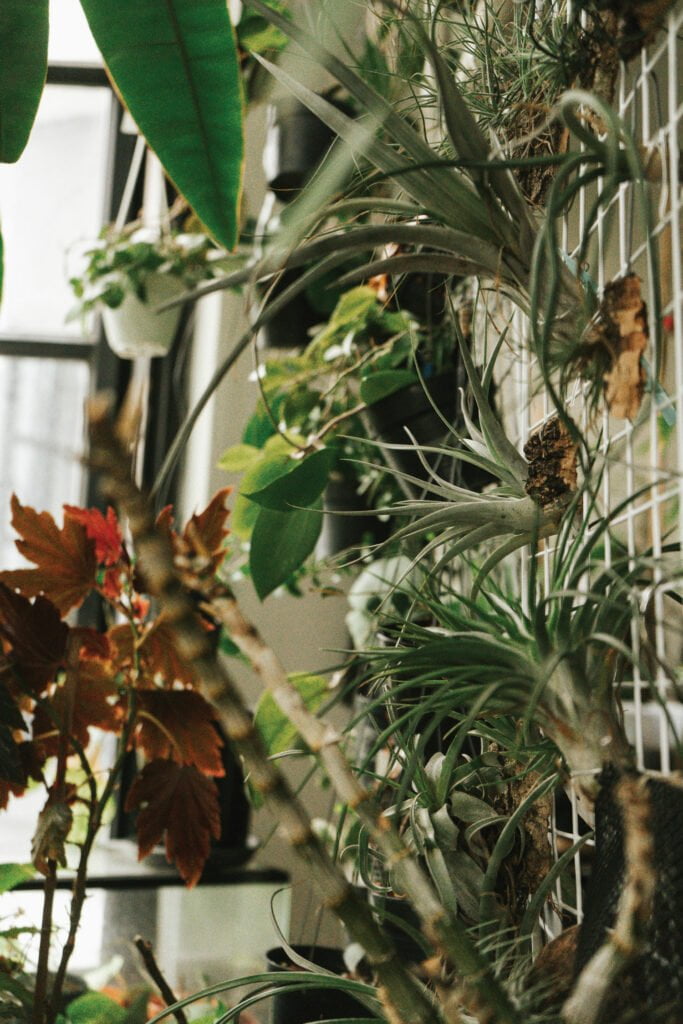
Leon Tan (@philodenleon) is one ‘plant parent’ who is hooked on horticulture in the home. The indoor gardener and tattoo artist first got into plants while living in Australia six years ago. “Friends bought me a succulent when I moved into my new apartment. That got me interested in understanding how to take care of plants and the rest is history,” he says.
Back in Singapore, Leon’s home boasts a whopping 250-350 plants. There are specific requirements for tending to each one, and he doesn’t take his responsibilities lightly. “I keep aroids, ferns, airplants, cacti, succulents and caudiciforms. The aroids need watering weekly and the cacti and succulents every 10-14 days. Along with checking for pests and general health, I spend a morning each week caring for them,” he says.
He believes his dedication pays off. “My green friends help to keep me grounded and calm,” he continues. “Their subtle movements towards the light allows me to understand them as more than just ornaments in a space, but as living creatures that live alongside me. That itself makes me feel more connected to nature and leads me to appreciate the little things in life.”
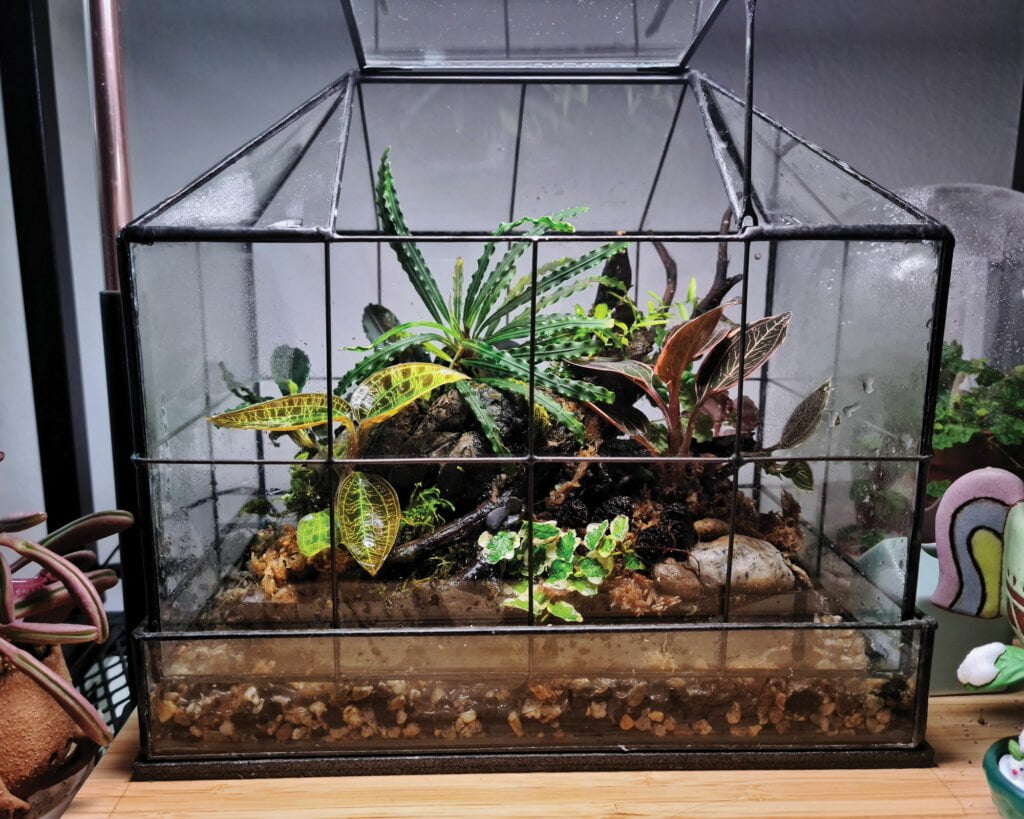
Feel at peace
Karen Lim understands Leon’s sentiments. Of the “maybe less than one hundred” plants she nurtures at her home (“a jungle!”) in Bras Basah, she confesses that the joy she feels when they respond to care with growth, or the unfurling of a new leaf, is indescribable. “Getting into the plant zone – watering, potting, solving pest issues – is meditative,” she says. “It slows you down. You can sit back, surrounded by them, and feel at peace.”
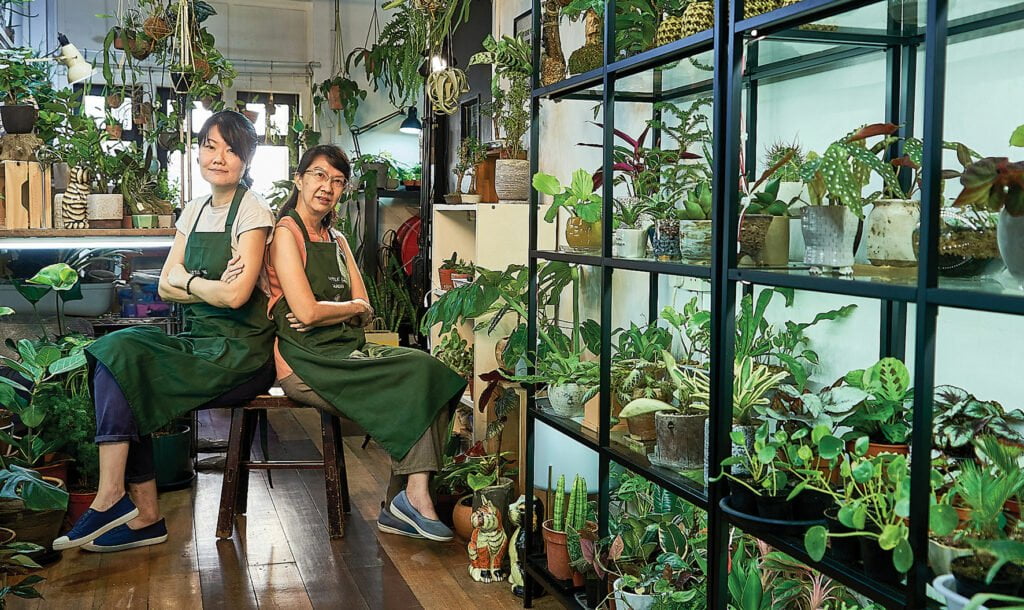
Karen began growing herbs and edibles as a side hobby while living in a small HDB flat. Five years ago, she went from running a busy PR company to a full-time plant professional when she launched Little Big Garden (littlebiggarden.com, @littlebiggarden), a plant store and creative space in Chinatown. Together with her business partner, they started out by making friends in the plant community and buying ornamental plants like kokedama (‘ball of moss’) and potted miniature trees. They haven’t looked back.
Fragility of life
Someone else whose love of natural beauty has developed into a thriving business is Little Ong. The Creative Director at fFurious (ffurious.com) has been fascinated by the living world since he was a child growing up in Singapore in the 70s and 80s. “I used to enjoy longkang fishing,” he says. “Back then, when the city was less developed, drains and streams would be teeming with fish like guppies, mollies, barbs and even bettas.”
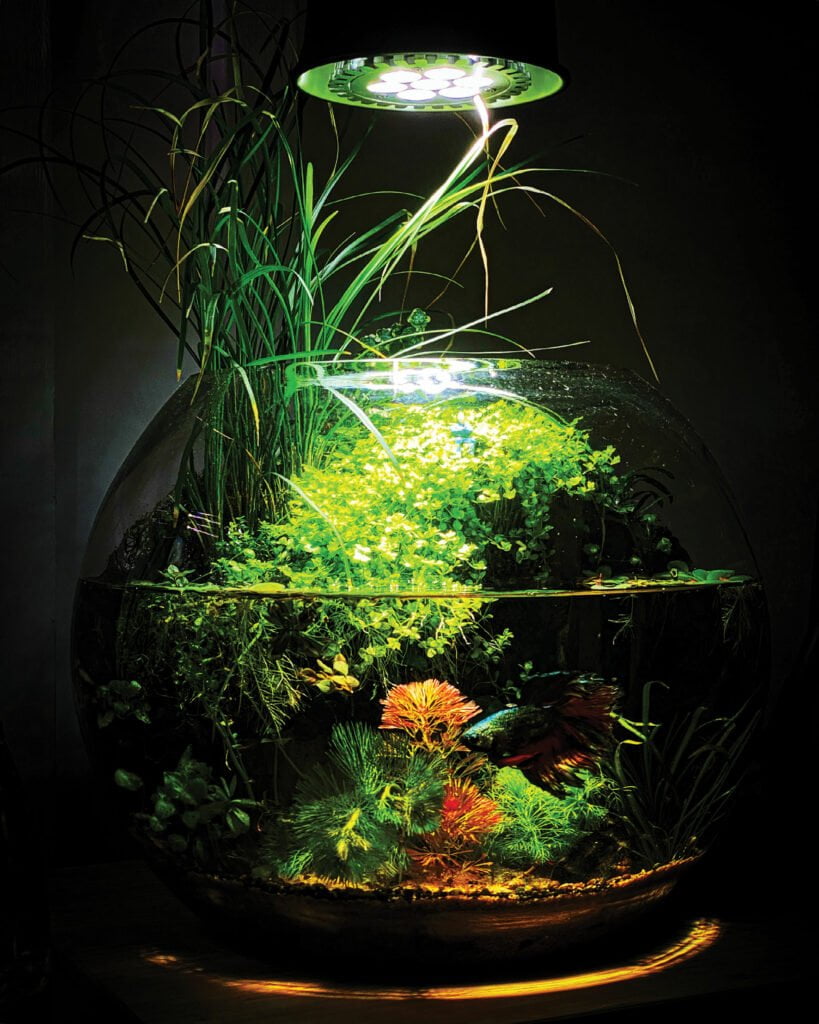
Six years ago, when his son Luca was two years-old, his interest was reignited. Keen for his son to keep pets and to learn about mortality and the fragility of life, they headed to a local fish farm. Little continues, “We came home with some mollies to put in a vase, and started to go to aquarium stores for Luca to net out fish from tanks. The vase grew into a small tank of plants and animals, and before long I had my first 2ft tank.”
He now owns 10 stunning aquascaped tanks at home and 20 in his design studio in Whampoa. “They are everywhere! We have aquajars, small tanks and a miniature pond with plants, fish, shrimp and snails on our desks. There’s a large aquajar on my record shelf and a giant wine glass with vampire crabs on the floor at one end,” he confesses.
The showstopper though, is the green wall and pond on the balcony. “I challenged myself to create an aquaponics system with water from a tank hydrating a green wall of plants. It took about four months, from building the wall rack to figuring how to get clear water to flow back into the tank.”
“We wanted our son to learn to care for others and keeping fish is a good way to practice nurturing”
Little Ong
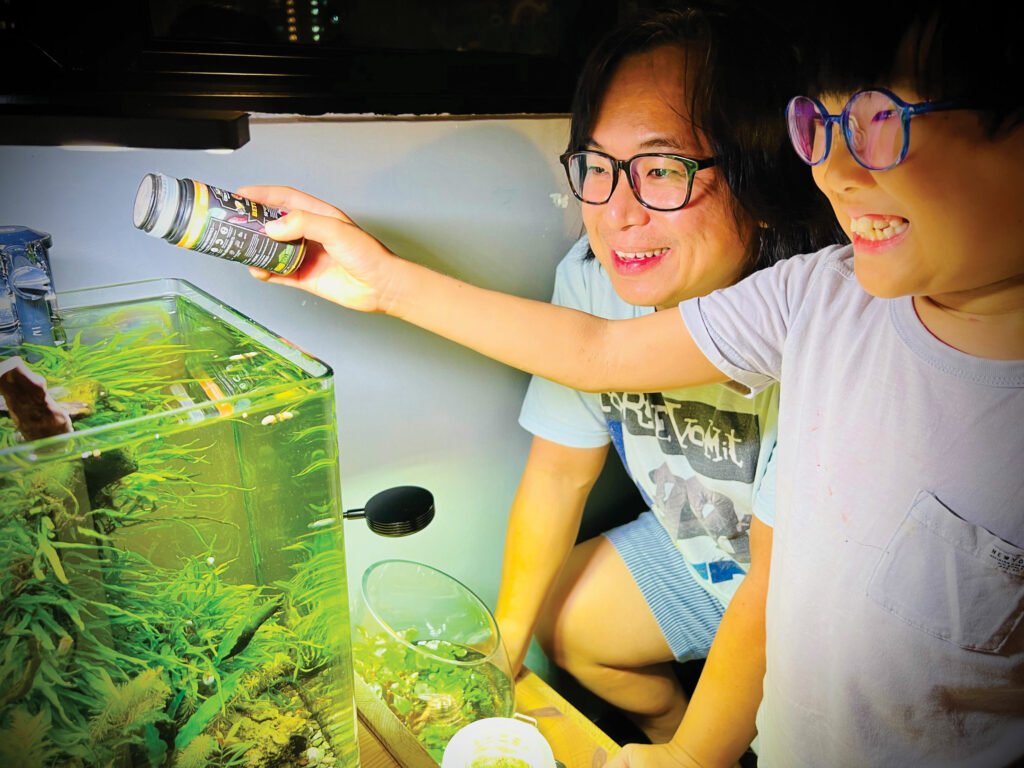
As for Luca, he is the proud owner of a nano tank complete with two angelfishes, a shrimp jar with golden shrimps (which has just given birth to shrimplets), and a crabitat with vampire crabs. Father and son spend weekends maintaining his tanks together: Luca trims his plants, scrubs algae and siphons water, while Little helps with cleaning the filter and pouring back water.
“My wife and I wanted our son to learn to care for others, and keeping fish is a good way for Luca to practice the art of nurturing,” Little explains. “Having his own tank instils responsibility which he practices by feeding his fish daily.”
Little’s desire to pass on his knowledge prompted him to launch his own aquascaping company, Ikan Billy (ikanbilly.com, @ikan_billy). “After working up the balcony I ran out of space so I started experimenting with creating balanced aquatic ecosystems in small jars. It was extremely difficult to get right, and I wanted to share this,” he says.
Three years on, his aquajar workshop is super-popular. “They’re the perfect entry-point into aquariums as they don’t take up much space,” Little continues, adding that “aquajars are also beautiful in the home or on your desk at work.”
The workshop is an introduction into crafting a jar and gives an in-depth knowledge into bio-chemistry and maintenance. New classes include sessions on creating mini-ponds, crabitats, and parent and child aquajars.
Nature does its magic
Like Luca, Sabrina Tang (@tanksforthemmrs) is another nature lover who started young. “My first aquarium purchase was in primary school,” admits the Retail Assistant at East Ocean Aquatic. “I’d be one of the few kids at recess catching bugs and drain fishing.” She divulges that today she owns ”just shy of a hundred plants all over the place” at her tiny studio apartment in Marine Parade. “I have succulents in a high-tech setup in my bedroom and about four terrariums.” Her variegated banana plant, lovingly named Sundae, lives with her parents.

In Clementi, Jasie Cheng (@JClifeisbeautiful) has five aquascape tanks, three nano tanks that have been transformed into open terrariums (emersed plants only, no underwater component), and three closed terrariums throughout her dining and living space.
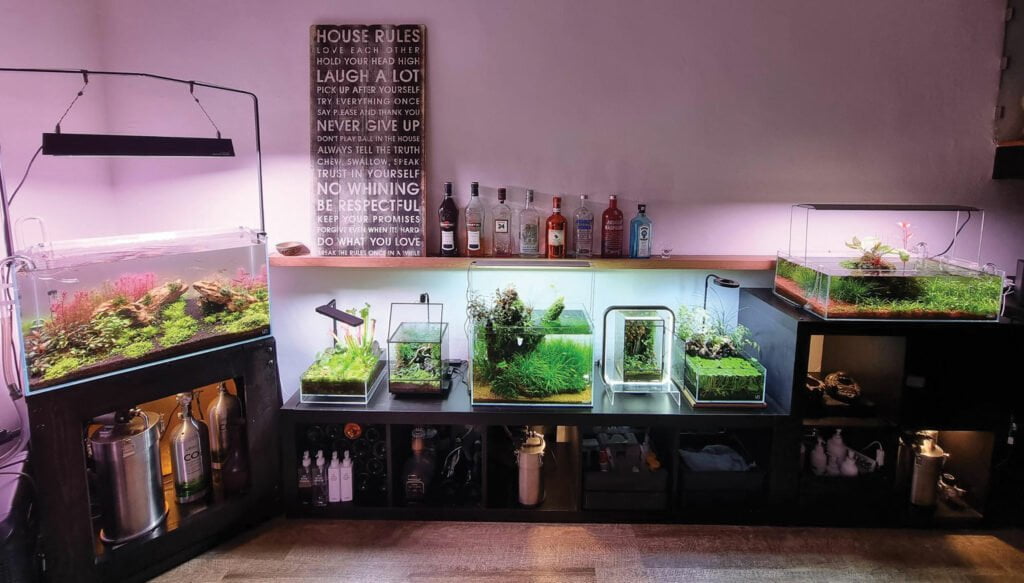
What started three years ago as “a simple tank with some guppies and plants I picked up from a local fish store” has escalated. Stepping into the Company Manager’s home is like entering another landscape entirely. Jasie says of her rainforest jungle styled scape; “I like the rainforest theme as it brings together my love for plants and nature with keeping fish. The balance and harmony is aesthetically pleasing and emotionally engaging. It’s where nature does its magic, and where my coral red and purple pencil fish love swimming amongst the overgrowth.”
Patience & commitment
Despite the serenity projected, everyone highlights that their private plant worlds take serious commitment. All have researched meticulously, formed connections within local gardening communities, watched hours of tutorials, and self-taught through trial and error.
In the beginning for Jasie, the process from initial scape inspiration to final layout plan – including hardware and hardscape setup, tank cycling, planting and adding fish, and the first pruning session – took three months. “It seemed like an eternity. Patience is a highly desirable trait for this hobby!” she laughs.
“It takes a village!” Sabrina adds, disclosing that she completes “two or three hours of daily maintenance.“
“Plants allow me to appreciate the little things in life”
Leon Tan
Little agrees, confessing that his tanks involve intense thought. “I first respond to the space of the vessel before I decide on the type and shape of wood, rocks, plants and animals to include. I think about the size, texture, colour and experience I’m aiming to achieve. I’m constantly absorbing what I see and do, be it a landscape painting or scenes from films or places I’ve visited. I store up all my memories to use as ideas.”
For Karen, her hobby is always with her. “Along with tending to plants at Little Big Garden, I bring sick plants to my house to look after,” she says. “My husband says that keeping plants is just a fad for many people, especially propelled by our inability to travel throughout Covid. But I believe that once you start on a plant journey and experience all of the rewards, you won’t stop. Nature is amazing and I continue to be wowed every time I discover something new.”
 Great places for pots, by Sabrina Tang
Great places for pots, by Sabrina Tang
- Egg on Rice pottery, available from Little Botany (littlebotany.com) and Dinky Studio (egg-on-rice.com/dinky-studio)
- San_Pottery (@san_pottery)
- Ariya Ceramic (@ariya_ceramic)
- Long Lai (@long_lai_)
Plants for beginners, by Leon Tan
- ZZ plant (Zamioculcas zamiifolia)
- Cast Iron Plant (Aspidistra elatior)
- Devil’s Ivy (Money Plant)
Steps to aquascaping, by Little Ong
- Consider what animal you want to keep in your aquarium as they might require a certain container
- Plan the space for your tank or jar before you start and have an electrical outlet nearby. At the very least you’ll need a lamp
- Size is everything. You don’t want any animals to suffer so be realistic
- Be patient when setting up the aquarium. It needs 3 – 4 weeks to mature before it can support animals



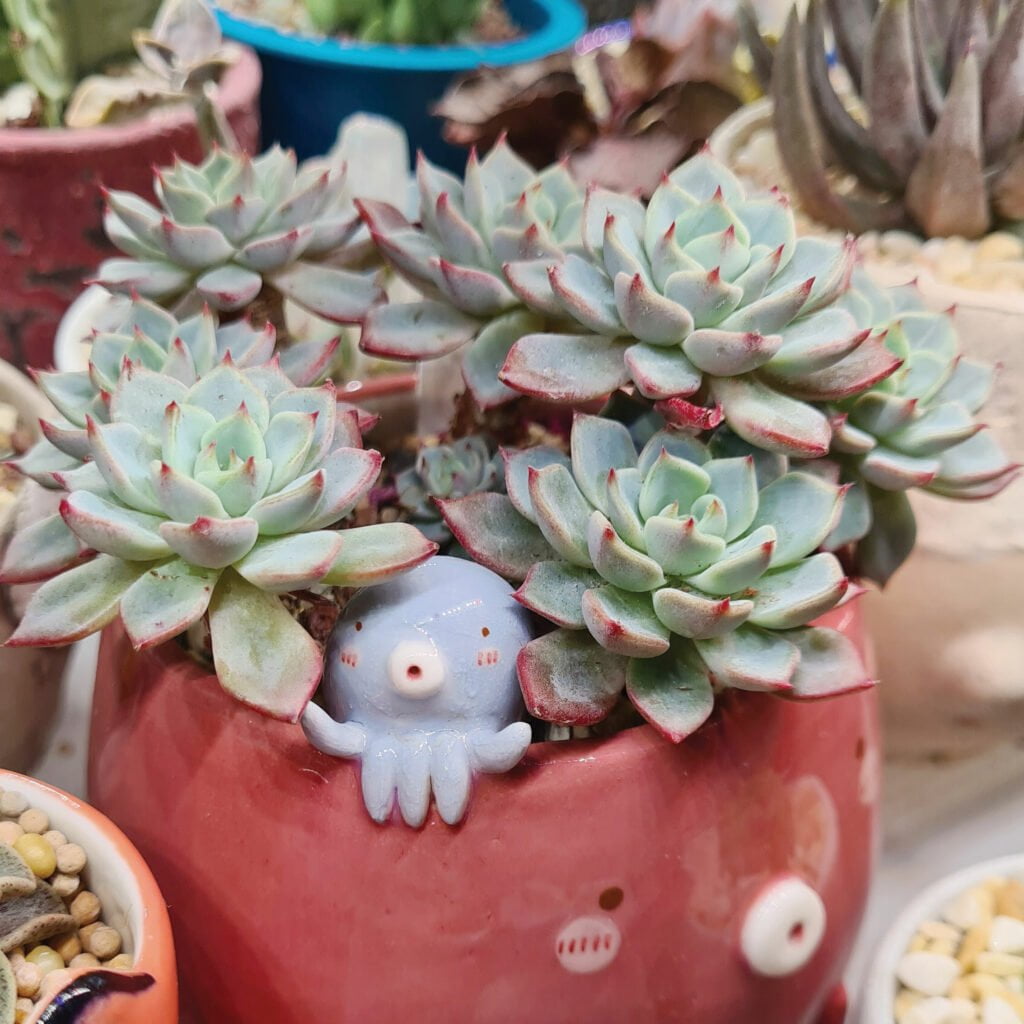 Great places for pots, by Sabrina Tang
Great places for pots, by Sabrina Tang




